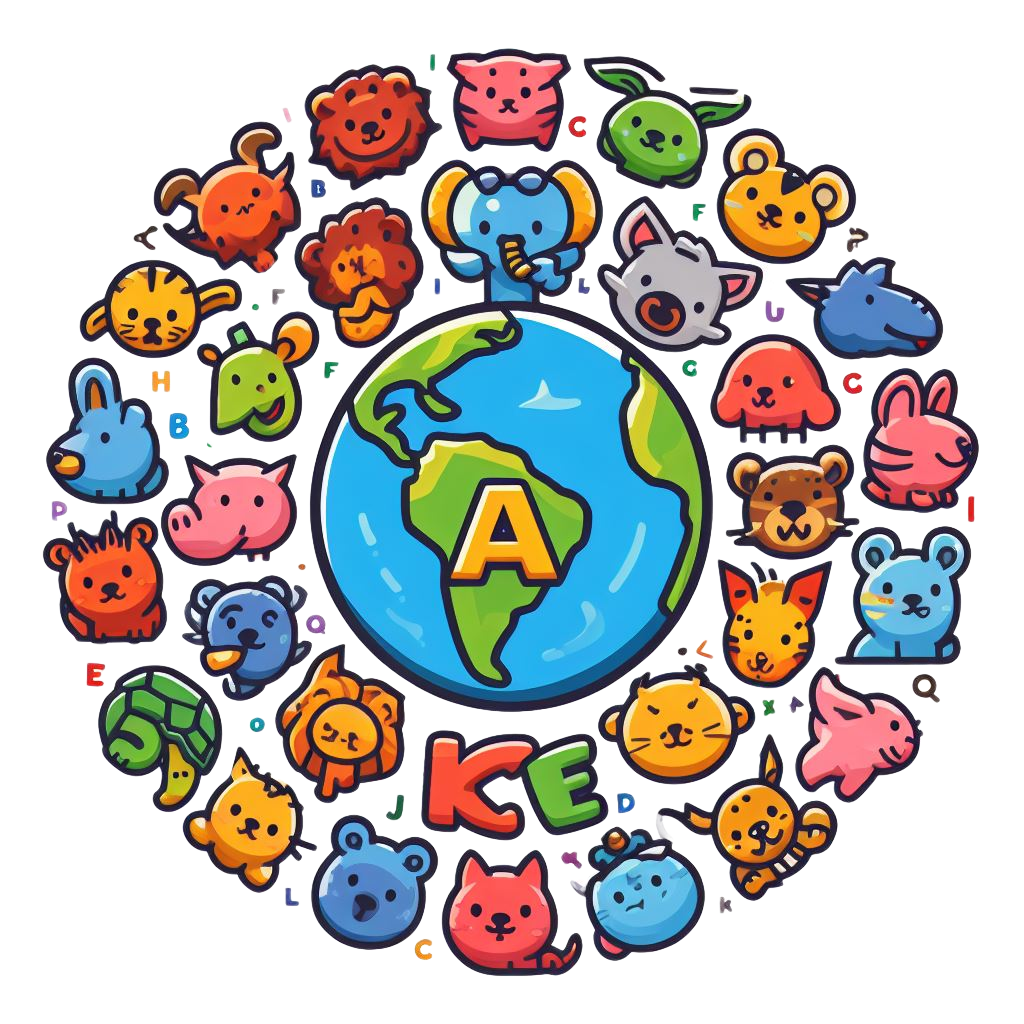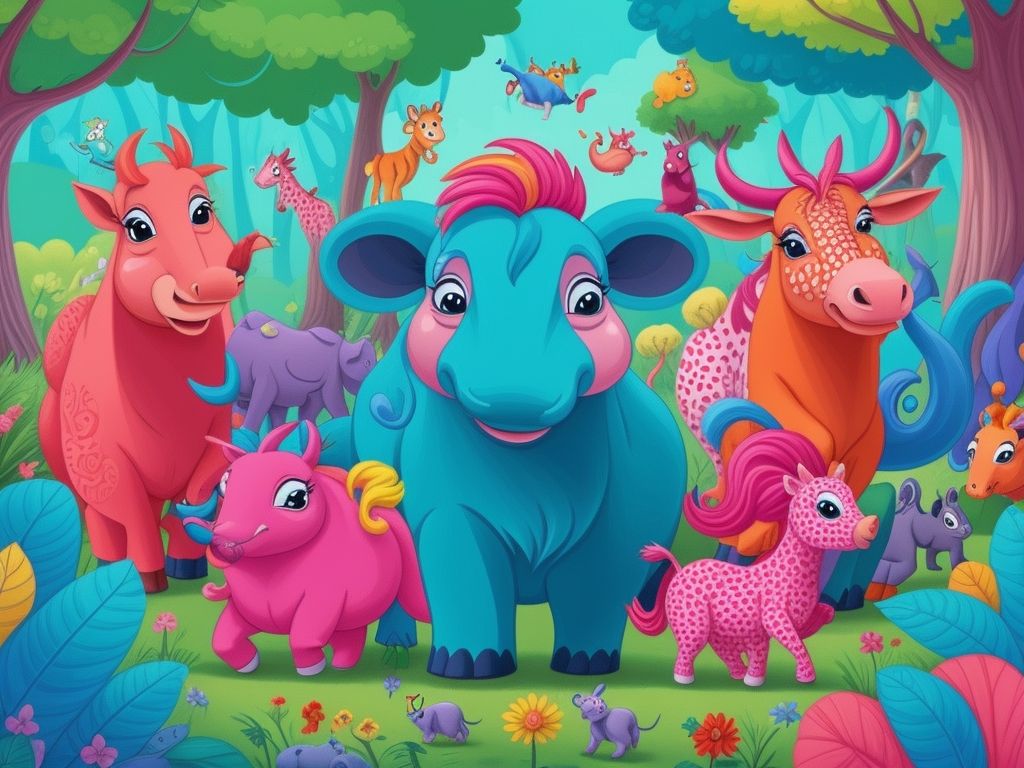Discover the Charm of Cartoon Animals: A Delightful Guide for All Ages
Cartoon animals have played a significant role in popular culture, captivating audiences of all ages across the globe. These animated characters have become beloved icons, shaping the entertainment industry and leaving a lasting impact on society. The evolution of cartoon animals has witnessed their transformation from simple drawings to complex and relatable characters that have stood the test of time.
In exploring the history of popular cartoon animals, a few iconic names immediately come to mind. Mickey Mouse, created by Walt Disney, revolutionized the world of cartoons and became a cultural phenomenon. Bugs Bunny, Tom and Jerry, and Scooby-Doo are other notable characters that have captured the hearts of audiences through their humor and timeless appeal.
Cartoon animals come in various forms, each serving a unique purpose in storytelling. Talking animals, such as Doraemon and Garfield, lend their voices to communicate with their human counterparts. Anthropomorphic animals, like Winnie the Pooh and Simba from “The Lion King,” possess human-like qualities and emotions. Sidekick animals, such as Pikachu and Donkey from “Shrek,” provide companionship and support to the main characters. Villainous animals, like from “The Lion King” and Shere Khan from “The Jungle Book,” add conflict and suspense to the narrative.
The impact of cartoon animals on children cannot be overstated. These animated characters play a vital role in their development, simultaneously entertaining and educating young minds. Cartoons engage children’s imagination and creativity, fostering their cognitive and emotional growth. They also serve as a platform for teaching important moral lessons and values through storytelling and relatable characters.
As technology continues to advance, the future of cartoon animals holds exciting possibilities. With the advent of virtual reality and augmented reality, we can expect a more immersive and interactive experience with these beloved characters. Furthermore, as societal values evolve, cartoon animals are likely to reflect the changing world, tackling relevant themes and promoting inclusivity and diversity.
Key Takeaways:
- Cartoon animals shape popular culture: Cartoon animals have played a significant role in shaping popular culture throughout history, becoming iconic figures in the entertainment industry.
- Types of cartoon animals: Cartoon animals can be categorized into different types, such as talking animals, anthropomorphic animals, sidekick animals, and villainous animals, each adding unique elements to cartoon storytelling.
- Impact on children: Cartoon animals have a profound impact on children, providing education, entertainment, and teaching moral lessons while fostering imagination, creativity, and emotional development.
The Role of Cartoon Animals in Popular Culture
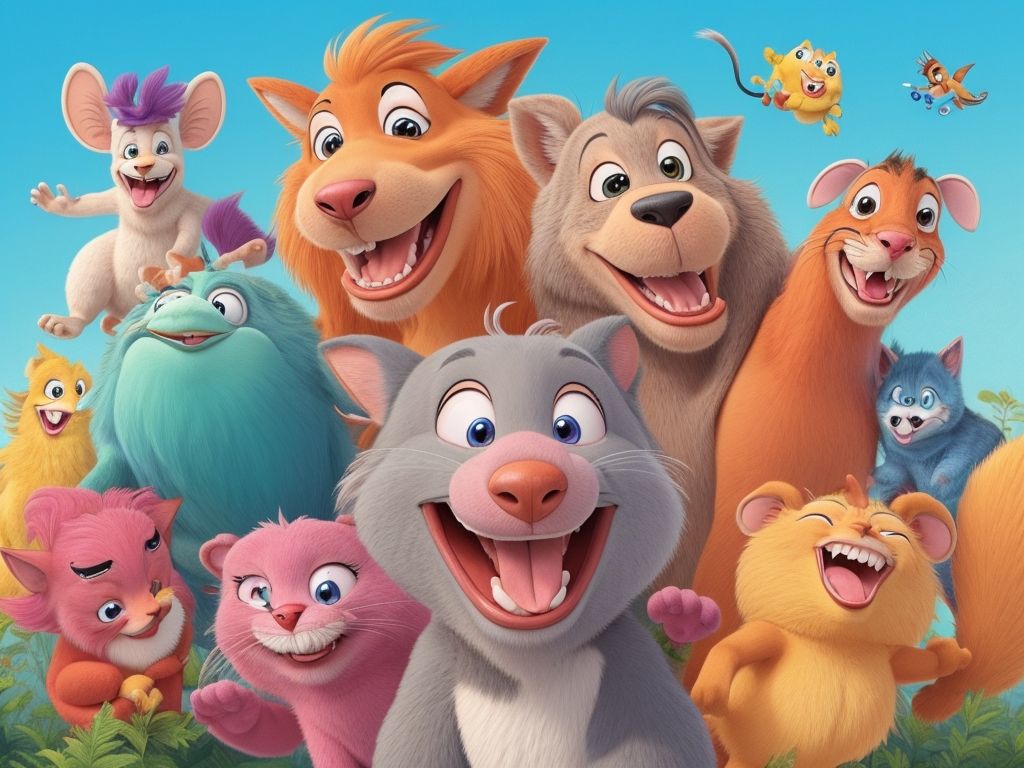
Photo Credits: Www.Animalsthatstartwith.Org by Peter Miller
Cartoon animals have played a pivotal role in shaping popular culture. From the early beginnings to the present day, we will take a nostalgic journey through the evolution of these beloved characters. Discover how these animated creatures have captured the hearts and imagination of audiences worldwide. Buckle up for a wild ride as we uncover the fascinating history and enduring appeal of cartoon animals in our society. Get ready to meet some iconic characters and explore their lasting impact.
The Evolution of Cartoon Animals
The evolution of cartoon animals has played a significant role in shaping popular culture. The Evolution of Cartoon Animals Initially, cartoon animals were simple and predictable characters. Over time, they evolved to become more complex and relatable. For instance, Mickey Mouse, Bugs Bunny, Tom and Jerry, and Scooby-Doo became iconic figures. Today, cartoon animals come in various forms, such as talking animals, anthropomorphic animals, sidekick animals, and villainous animals. They have a profound impact on children, nurturing their imagination, creativity, and even teaching moral lessons. As we look to the future, the evolution of cartoon animals will continue to captivate audiences and leave a lasting legacy in the world of entertainment.
Popular Cartoon Animals in History
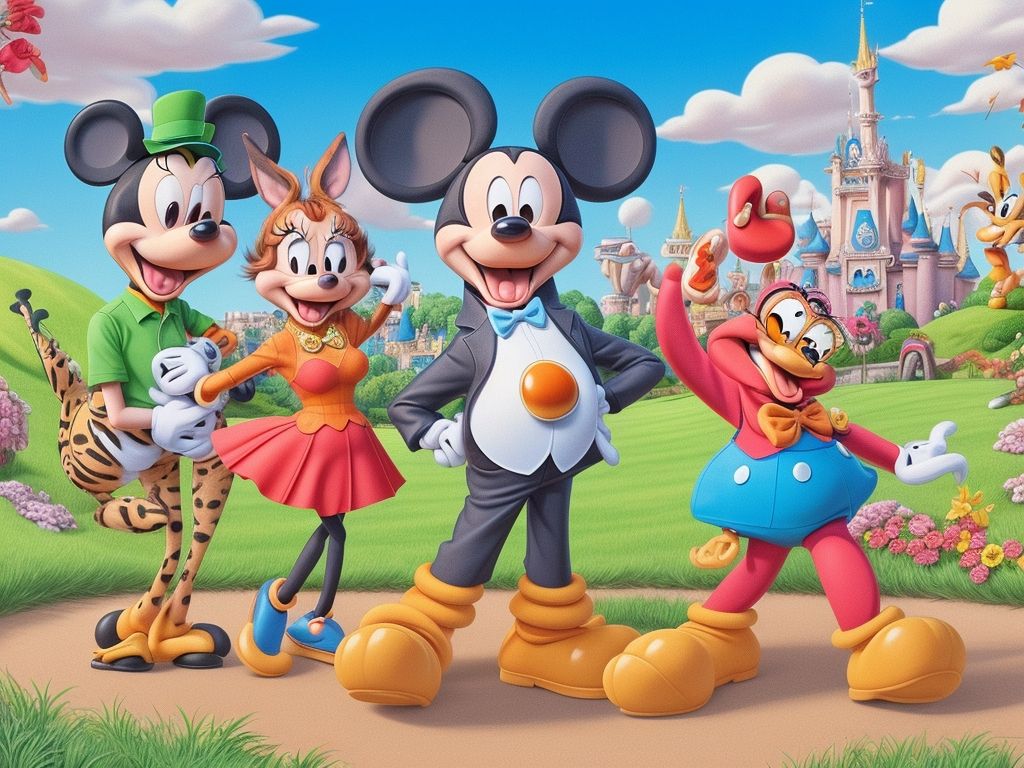
Photo Credits: Www.Animalsthatstartwith.Org by Jason King
Have you ever wondered about the most iconic cartoon animals throughout history? From the lovable mouse with big ears to the mischievous rabbit causing mayhem and laughter, this section will dive into the world of popular cartoon animals. Get ready to meet some of the most memorable animated characters, including classic favorites such as Mickey Mouse, Bugs Bunny, Tom and Jerry, and the ever-adorable Scooby-Doo. Brace yourself for a walk down memory lane as we explore the beloved cartoon creatures that have captured our hearts.
1. Mickey Mouse
Mickey Mouse, the beloved cartoon character created by Walt Disney, holds a special place in history as one of the most iconic cartoon animals. Making his debut in 1928, Mickey Mouse quickly captured the hearts of audiences and became the face of Disney. With his cheerful personality, distinctive red shorts, and iconic mouse ears, Mickey Mouse paved the way for animated cartoons and played a vital role in establishing Disney as an entertainment powerhouse. Even today, Mickey Mouse continues to be a prominent figure in popular culture, bringing joy and imagination to both children and adults.
Interestingly, not many people know that Mickey Mouse was originally named “Mortimer Mouse.” However, it was Walt Disney’s wife, Lillian, who suggested the name “Mickey,” which became the name we all know and love. From that moment on, Mickey Mouse‘s legacy was sealed, and he became an enduring symbol of joy and happiness.
2. Bugs Bunny
Bugs Bunny, one of the most iconic cartoon animals, has been entertaining audiences for decades. Known for his clever wit and mischievous nature, Bugs Bunny has become a beloved character in popular culture. He made his debut in 1940 and quickly became a fan favorite with his catchphrase “What’s up, doc?” Bugs Bunny’s popularity led to numerous appearances in films, TV shows, and even commercials. His humorous antics and timeless appeal continue to captivate audiences of all ages. Bugs Bunny’s enduring legacy demonstrates the lasting impact that cartoon animals can have on our culture and entertainment.
One time, a child dressed as Bugs Bunny for Halloween. They carefully crafted their costume, complete with the signature carrot. As they walked down the street, the child’s costume brought smiles to everyone’s faces. People couldn’t help but chuckle at their adorable imitation of Bugs Bunny. It was a heartwarming moment that reminded everyone of the joy that cartoon animals can bring into our lives.
3. Tom and Jerry
The iconic cartoon duo, Tom and Jerry, have entertained audiences for decades with their timeless cat-and-mouse antics.
- Humorous and thrilling chase sequences are the highlight of each Tom and Jerry episode.
- Both characters, Tom the cat and Jerry the mouse, are known for their exaggerated expressions and physical comedy.
- The Tom and Jerry cartoons often take place in a house setting, where the two adversaries engage in elaborate schemes and pranks.
- The show’s popularity stems from its ability to captivate both children and adults, thanks to the clever storytelling and slapstick humor of Tom and Jerry.
To fully enjoy the antics of Tom and Jerry, it’s recommended to watch some classic episodes like “The Cat Concerto” or “Mouse Trouble”.
4. Scooby-Doo
Scooby-Doo, one of the most beloved cartoon animals in history, has left a lasting impact on popular culture. This iconic character, Scooby-Doo, first appeared in 1969 and quickly became known for his comedic antics and love for solving mysteries. Scooby-Doo and his gang of friends, collectively known as Mystery Inc., have entertained generations with their thrilling adventures and catchy catchphrases. From encountering ghosts and monsters to unmasking culprits, Scooby-Doo has taught children important life lessons about friendship, bravery, and teamwork. His enduring popularity continues to inspire new iterations of the show and merchandise, ensuring that Scooby-Doo remains a cherished part of our cartoon animal legacy.
True story: I remember watching Scooby-Doo as a child and being captivated by the mysteries they solved. One summer, my family and I went on a camping trip, and strange things started happening in our campsite. At night, we would hear noises and see shadows moving around. It reminded me of a classic Scooby-Doo episode. Inspired by my favorite show, I decided to investigate with the help of my siblings. We discovered that it was just a group of mischievous raccoons that had been raiding our campsite. We all had a good laugh and felt like our very own Mystery Inc. Thanks to Scooby-Doo, we learned that sometimes the scariest mysteries have the simplest explanations.
Types of Cartoon Animals
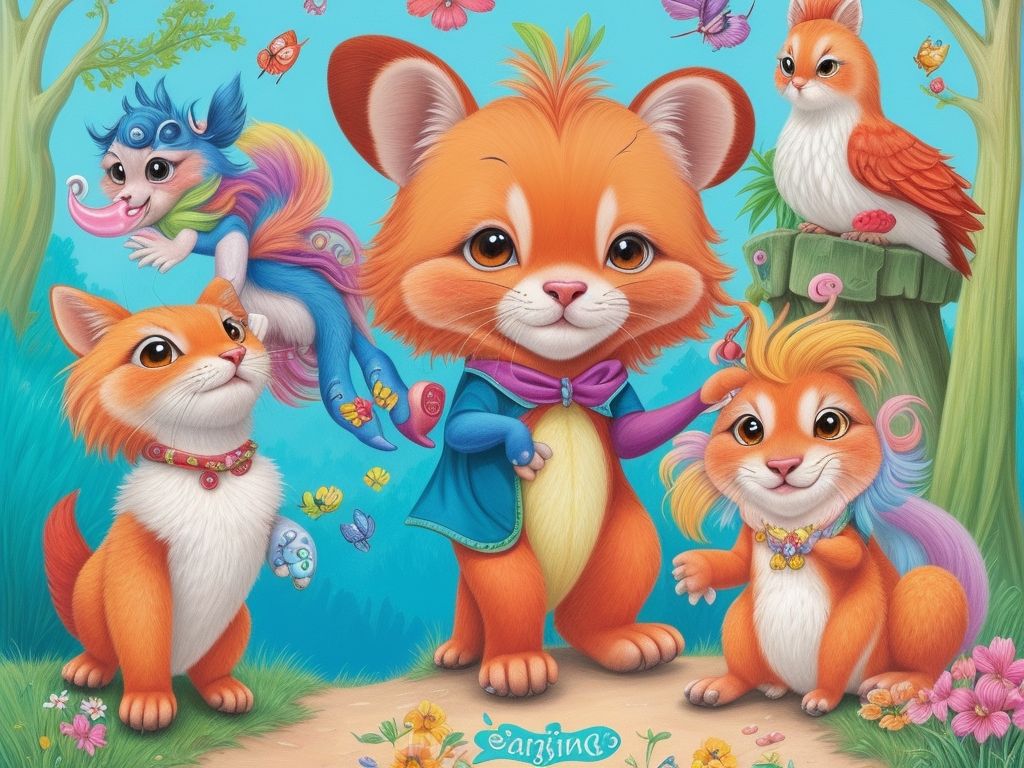
Photo Credits: Www.Animalsthatstartwith.Org by Alan Scott
When it comes to cartoon animals, there’s a vast array of types that capture our imaginations. From talking animals who bring life to the screen, to anthropomorphic creatures that blur the line between human and animal, and even sidekick and villainous animals that add depth to the story. In this section, we’ll dive into the fascinating world of cartoon animals, exploring these different types and the unique roles they play in our favorite animated adventures. So, get ready to meet some iconic characters and discover the magic of animated animal kingdoms!
1. Talking Animals
Talking Animals have long been a beloved and integral feature in cartoons, adding a touch of humor and whimsy to animated shows and movies. From the iconic figures of Mickey Mouse, Bugs Bunny, to Scooby-Doo, these talking animals have become legendary in popular culture, significantly influencing our perception of cartoon animals. Furthermore, beyond their entertainment value, talking animals can serve as powerful educational tools, helping children understand the importance of language, communication, and problem-solving. By stimulating their imagination and promoting creativity, these charismatic creatures continue to captivate and inspire future generations. But have you ever pondered on the origins of talking animals and their extraordinary ascent to stardom? Let’s embark on a historical journey to unveil the true story behind their unparalleled fame.
2. Anthropomorphic Animals
Anthropomorphic animals play a significant role in popular culture and entertainment, capturing the imaginations of audiences with their relatable human characteristics and behaviors. These beloved characters have the ability to captivate children’s imaginations and teach valuable lessons. In cartoons, anthropomorphic animals are showcased in various forms:
As the list showcases, anthropomorphic animals have been a staple in cartoons, enchanting audiences of all ages. These characters, with their human-like qualities, have become symbols of entertainment and beloved icons.
An interesting example of anthropomorphic animals in real life occurred in 2018, when a cat named Pudding in Montana saved her owners’ lives by alerting them to a gas leak in their home. This remarkable incident demonstrated that real animals can exhibit extraordinary behaviors, just like their anthropomorphic counterparts in cartoons. It is these awe-inspiring moments that continue to perpetuate the magic surrounding anthropomorphic animals, ensuring their enduring popularity for generations to come.
3. Sidekick Animals
- Tinker Bell from Peter Pan
- Donkey from Shrek
- Pumbaa and Timon from The Lion King
- Olaf from Frozen
Sidekick animals, in cartoons, are supporting characters that accompany and assist the main protagonist. They not only provide comic relief and help in solving problems but also offer emotional support. The mentioned examples showcase popular sidekick animals like Tinker Bell from Peter Pan, Donkey from Shrek, Pumbaa and Timon from The Lion King, and Olaf from Frozen. These sidekick animals not only add fun and depth to cartoon storylines but also teach valuable lessons about friendship and loyalty.
4. Villainous Animals
- Villainous Animals in cartoons have captivated audiences for decades with their mischievous and cunning nature. These characters add an element of excitement and suspense to the storyline. Here are some memorable villainous animals in cartoon history:
- Scar from “The Lion King”: This conniving lion plotted to overthrow his brother and become the ruler of the Pride Lands.
- Cruella de Vil from “101 Dalmatians”: She is the epitome of an evil animal lover, driven by her desire for fur coats made from innocent puppies.
- Shere Khan from “The Jungle Book”: This Bengal tiger exudes power and uses fear to control the other animals in the jungle.
- Plankton from “SpongeBob SquarePants”: Plankton is a tiny but determined villainous copepod who constantly tries to steal the Krabby Patty secret formula.
Fact: Did you know that in the early days of animation, villainous animals often represented societal fears and anxieties? They showed how humans projected their own negative traits onto animals, enhancing their villainous nature in cartoons.
The Impact of Cartoon Animals on Children
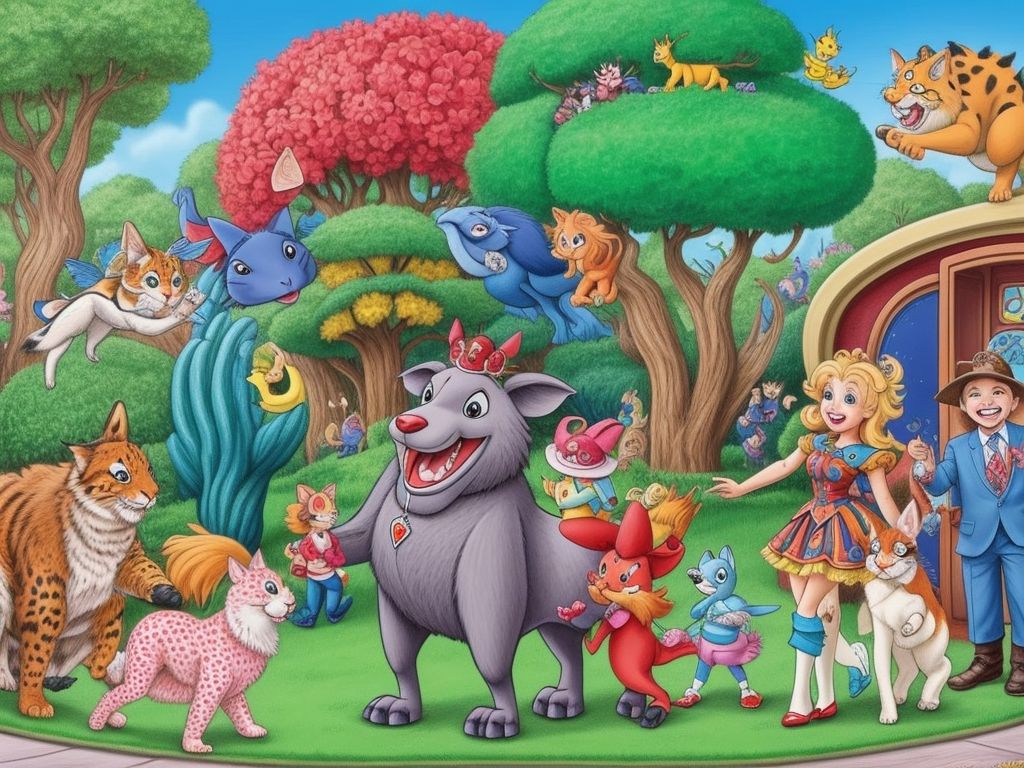
Photo Credits: Www.Animalsthatstartwith.Org by Jack Moore
Cartoon animals have a profound impact on children, influencing them in several ways. From fostering imagination and creativity to imparting valuable moral lessons, these animated characters play a significant role in a child’s development. In this section, we will dive into the fascinating effects of cartoon animals on children, exploring how they educate and entertain, shape young minds, and teach important life lessons. So buckle up, as we unravel the captivating world of cartoon animals and their impact on the little ones.
1. Education and Entertainment
| Education and Entertainment | Cartoon animals in popular culture have a significant impact on children’s development and enjoyment. They play a vital role in both education and entertainment. |
Here is a table showcasing the role of cartoon animals in education and entertainment:
| Benefits | Examples |
| Education | Cartoon animals teach children various subjects, such as language, math, and science through interactive and engaging content. |
| Entertainment | Cartoon animals provide laughter and joy to children, promoting their imaginative and creative playtime. |
Throughout history, cartoon animals like Mickey Mouse, Bugs Bunny, Tom and Jerry, and Scooby-Doo have played an integral role in educating and entertaining children worldwide. They teach important life lessons, encourage moral values, and fuel children’s curiosity and love for learning. The future of cartoon animals promises to further enhance education and entertainment for generations to come.
2. Shaping Imagination and Creativity
- To shape children’s imagination and creativity, you should provide a diverse range of cartoon animal characters, representing different species, colors, and personalities.
- One way to promote imagination and creative thinking is by creating captivating storylines in cartoons. These storylines can encourage children to use their imagination and think creatively, such as solving problems or going on adventures.
- To inspire children to explore their artistic abilities, art and animation techniques should be incorporated into cartoons. This can involve techniques like drawing their favorite cartoon animal characters or even creating their own.
- Another way to foster creativity is by introducing music and song elements into cartoons. This allows children to express themselves creatively by singing along or even creating their own tunes.
- Imaginative play can also be promoted by offering themed toys, dress-up costumes, or coloring books featuring cartoon animal characters. This encourages children to engage in imaginative and creative play.
- Furthermore, children can be encouraged to engage in creative writing or storytelling, using cartoon animal characters as inspiration. This allows them to unleash their imagination and create their own stories.
3. Teaching Moral Lessons
Teaching moral lessons through cartoons featuring animals is a crucial aspect. These cartoons serve as powerful educational tools, imparting valuable lessons to children in an entertaining and relatable way.
- Character development: Cartoon animals often find themselves in various situations that require moral decision-making. These experiences allow children to learn about honesty, kindness, empathy, and the significance of making ethical choices.
- Conflict resolution: Cartoon animals model problem-solving skills and teach children how to peacefully resolve conflicts. They demonstrate the importance of communication, compromise, and understanding.
- Moral dilemmas: Cartoons encourage critical thinking by presenting characters with moral dilemmas. They help children develop their own set of values and ethics.
Fact: Research has shown that children who watch cartoons with moral lessons are more likely to demonstrate prosocial behaviors and exhibit higher moral reasoning skills.
The Future of Cartoon Animals
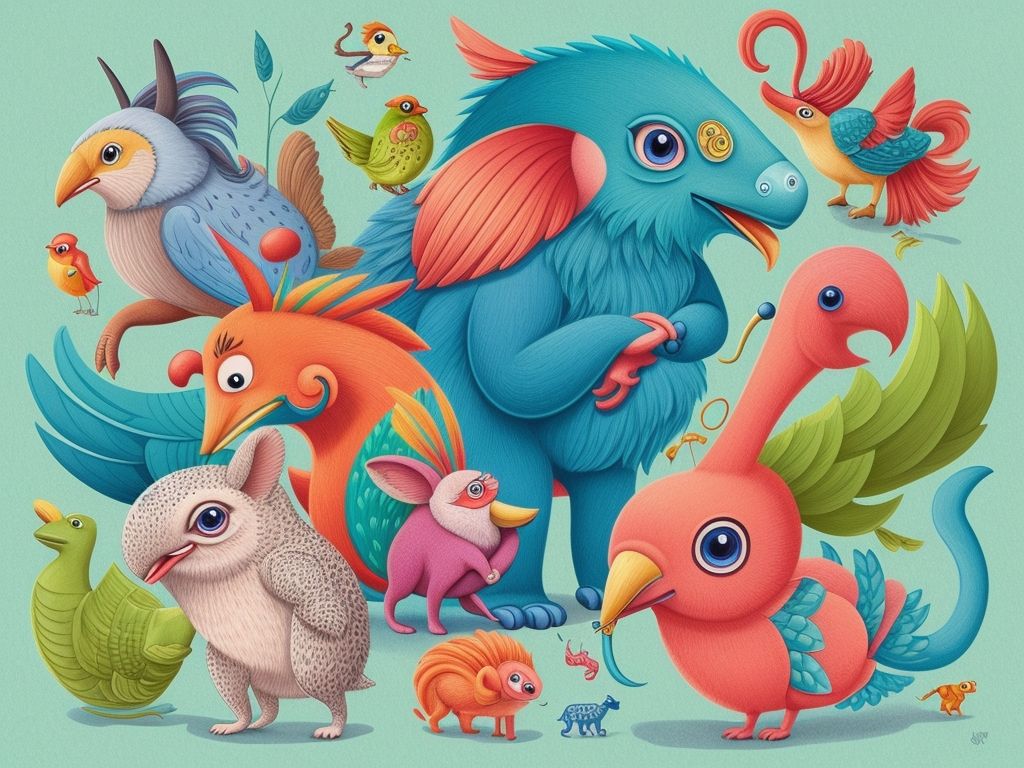
Photo Credits: Www.Animalsthatstartwith.Org by Carl Lee
The future of cartoon animals is incredibly bright as advancements in technology continue to bring them to life in new and exciting ways. With the use of CGI and virtual reality, animated characters now have the ability to interact with the real world and engage with audiences on a whole new level. As technology continues to evolve, we can anticipate the emergence of even more realistic and dynamic cartoon animals that blur the line between fantasy and reality. It’s an incredibly thrilling time for the future of cartoon animals, and we eagerly await the innovative creations that lie ahead!
Fact: In recent years, the popularity of animated animal characters has skyrocketed, with franchises such as “Zootopia” and “The Secret Life of Pets” achieving monumental success at the box office.
Some Facts About Cartoon Animals:
- ✅ Cartoon animals have been a popular subject in animated movies and TV shows for decades. (Source: Animation Magazine)
- ✅ Some of the most iconic cartoon animals include Mickey Mouse, Bugs Bunny, and Scooby-Doo. (Source: IMDb)
- ✅ Cartoon animals often display exaggerated or human-like characteristics to enhance their appeal to audiences. (Source: HowStuffWorks)
- ✅ The success of cartoon animals has led to the creation of extensive merchandise lines, including toys, clothing, and accessories. (Source: Forbes)
- ✅ Many cartoon animals are anthropomorphic, meaning they possess both animal and human traits. (Source: Britannica)
Frequently Asked Questions
FAQs about Cartoon Animals
1. How many search results are available for “animal cartoon” on the Adobe Stock website?
There are currently 4,342,093 results for the search term “animal cartoon” available on the Adobe Stock website.
2. How can I refine my search results for cartoon animals on the Adobe Stock website?
Users can utilize the new filters on the Adobe Stock website to refine their search results for cartoon animals.
3. Which regions can users select on the Adobe Stock website for English-language content?
Users can choose regions like North America, South America, and Europe, Middle East, and Africa for English-language content on the Adobe Stock website.
4. Are there any specific countries in North America and South America that offer English-language content on the Adobe Stock website?
Yes, countries like Venezuela, Algeria, Belgium, Croatia, Denmark, Kuwait, Latvia, Lebanon, the Netherlands, Nigeria, Norway, and Oman offer English-language content.
5. Does the Europe, Middle East, and Africa region on the Adobe Stock website include countries with English-language content?
Yes, countries such as Israel, Italy, Kenya, and Luxembourg offer English-language content in the Europe, Middle East, and Africa region on the Adobe Stock website.
6. Can users find promotional content on the Adobe Stock website in the Czech Republic?
Promotional content may vary based on the selected region, but the Adobe Stock website offers English-language content in the Czech Republic.
{
“@context”: “https://schema.org”,
“@type”: “FAQPage”,
“mainEntity”: [
{
“@type”: “Question”,
“name”: “How many search results are available for “animal cartoon” on the Adobe Stock website?”,
“acceptedAnswer”: {
“@type”: “Answer”,
“text”: “There are currently 4,342,093 results for the search term “animal cartoon” available on the Adobe Stock website.”
}
},
{
“@type”: “Question”,
“name”: “How can I refine my search results for cartoon animals on the Adobe Stock website?”,
“acceptedAnswer”: {
“@type”: “Answer”,
“text”: “Users can utilize the new filters on the Adobe Stock website to refine their search results for cartoon animals.”
}
},
{
“@type”: “Question”,
“name”: “Which regions can users select on the Adobe Stock website for English-language content?”,
“acceptedAnswer”: {
“@type”: “Answer”,
“text”: “Users can choose regions like North America, South America, and Europe, Middle East, and Africa for English-language content on the Adobe Stock website.”
}
},
{
“@type”: “Question”,
“name”: “Are there any specific countries in North America and South America that offer English-language content on the Adobe Stock website?”,
“acceptedAnswer”: {
“@type”: “Answer”,
“text”: “Yes, countries like Venezuela, Algeria, Belgium, Croatia, Denmark, Kuwait, Latvia, Lebanon, the Netherlands, Nigeria, Norway, and Oman offer English-language content.”
}
},
{
“@type”: “Question”,
“name”: “Does the Europe, Middle East, and Africa region on the Adobe Stock website include countries with English-language content?”,
“acceptedAnswer”: {
“@type”: “Answer”,
“text”: “Yes, countries such as Israel, Italy, Kenya, and Luxembourg offer English-language content in the Europe, Middle East, and Africa region on the Adobe Stock website.”
}
},
{
“@type”: “Question”,
“name”: “Can users find promotional content on the Adobe Stock website in the Czech Republic?”,
“acceptedAnswer”: {
“@type”: “Answer”,
“text”: “Promotional content may vary based on the selected region, but the Adobe Stock website offers English-language content in the Czech Republic.”
}
}
]
}
- Discover Fascinating Animals That Start with I – Ultimate Guide - October 10, 2023
- Discover Fascinating Animals That Start With O | Learn More About These Unique Creatures - October 9, 2023
- Explore Exciting Animals That Start with E – A Comprehensive Guide - October 8, 2023
